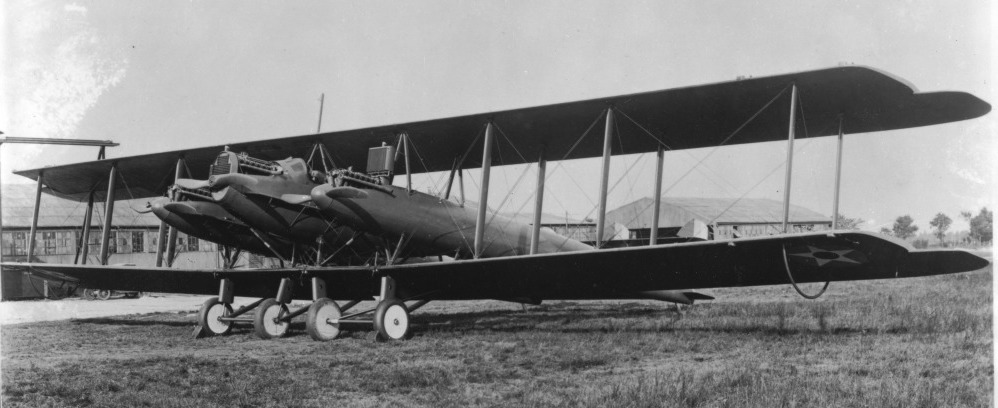LWF model H Owl on:
[Wikipedia]
[Google]
[Amazon]
 The L-W-F Model H Owl was a large American
The L-W-F Model H Owl was a large American
 The Owl was first flown by Ernest Harmon from
The Owl was first flown by Ernest Harmon from

 The L-W-F Model H Owl was a large American
The L-W-F Model H Owl was a large American twin-boom
A twin-boom aircraft is characterised by two longitudinal booms (extended nacelle-like bodies). The booms may contain ancillary items such as fuel tanks and/or provide a supporting structure for other items. Typically, twin tailbooms support ...
trimotor
A trimotor is an aircraft powered by three engines and represents a compromise between complexity and safety and was often a result of the limited power of the engines available to the designer. Many trimotors were designed and built in the 1920s ...
biplane
A biplane is a fixed-wing aircraft with two main wings stacked one above the other. The first powered, controlled aeroplane to fly, the Wright Flyer, used a biplane wing arrangement, as did many aircraft in the early years of aviation. While ...
designed and built by LWF Engineering as a mail plane
A mail plane is an aircraft used for carrying mail.
Aircraft that were purely mail planes existed almost exclusively prior to World War II. Because early aircraft were too underpowered to carry cargoes, and too costly to run any "economy class" ...
in 1920, but after being rejected for that role, the single prototype was sold to the United States Army Air Service
The United States Army Air Service (USAAS)Craven and Cate Vol. 1, p. 9 (also known as the ''"Air Service"'', ''"U.S. Air Service"'' and before its legislative establishment in 1920, the ''"Air Service, United States Army"'') was the aerial war ...
for evaluation as a bomber but failed to secure any orders.
Design and development
It had a center nacelle with room for three crew members suspended on struts between the wings and flanked on either side by similarly braced tail booms. All three fuselages had a Liberty L-12 engine in the nose, and were fabricated from laminated wood in the same manner as had been used in prior LWF fuselage designs, with three thin layers of wood laid at an angle to each other and separated with fabric. The four bay biplane wings were fitted with ailerons on both upper and lower wings. It had a biplane horizontal stabilizer with three rudders, and ailerons on all four wings. No fin was provided for the center rudder. All controls were given generous aerodynamic counterbalances to reduce control forces. The initial six-wheel undercarriage was later modified to four-wheels, and the radiator for the center engine was moved from in front of the pilot to between the engine and the propeller.Operational history
 The Owl was first flown by Ernest Harmon from
The Owl was first flown by Ernest Harmon from Mitchel Field
Mitchell may refer to:
People
*Mitchell (surname)
*Mitchell (given name)
Places Australia
* Mitchell, Australian Capital Territory, a light-industrial estate
* Mitchell, New South Wales, a suburb of Bathurst
* Mitchell, Northern Territor ...
, on Long Island
Long Island is a densely populated island in the southeastern region of the U.S. state of New York (state), New York, part of the New York metropolitan area. With over 8 million people, Long Island is the most populous island in the United Sta ...
, New York, on 22 May 1920.
Although built for night air mail service (hence being named Owl), it failed to interest the Post Office.
Between 1921 and 1922, the United States Army Air Service evaluated it as a bomber at Langley Field Langley may refer to:
People
* Langley (surname), a common English surname, including a list of notable people with the name
* Dawn Langley Simmons (1922–2000), English author and biographer
* Elizabeth Langley (born 1933), Canadian perform ...
in VirginiaSpearman, 1985, p.5 when it was allocated Army Air Service serial number ''64012'', however its performance was described as “adequate but not impressive.”
General Billy Mitchell
William Lendrum Mitchell (December 29, 1879 – February 19, 1936) was a United States Army officer who is regarded as the father of the United States Air Force.
Mitchell served in France during World War I and, by the conflict's end, command ...
planned to evaluate the design during the bombing tests to sink the and the in September 1923, but it does not appear that this actually occurred.Maurer, 2004, pp.124-126 The sole prototype was scrapped in 1923. Two prototypes of the XNBS-2, a scaled-down twin-engine derivative of the Owl, were ordered in 1923, but this order was cancelled before construction began.
Variants
;Model H Owl: biplane mailplane/bomber, one built. ;NBS-2: Scaled down twin-engined version. Order for two cancelled and none built.Operators
;:United States Army Air Service
The United States Army Air Service (USAAS)Craven and Cate Vol. 1, p. 9 (also known as the ''"Air Service"'', ''"U.S. Air Service"'' and before its legislative establishment in 1920, the ''"Air Service, United States Army"'') was the aerial war ...
Specifications (model H Owl)

See also
References
Citations
Bibliography
* * * {{LWF aircraft L-W-F aircraft 1920s United States bomber aircraft Biplanes Aircraft first flown in 1920 Trimotors